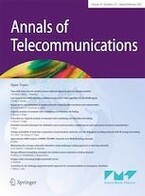Performance evaluation of an active signaling based time-slot scheduling scheme for connected vehicles. Annals of Telecommunications
- Autors: Boukhalfa, F., Hadded, M., Muhlethaler, P., & Shagdar, O. (2021).
- Tipus de publicació: Article
- URL Publicacio: Performance evaluation of an active signaling based time-slot scheduling scheme for connected vehicles. Annals of Telecommunications
- Titol publicació (nom del llibre o de la revista): Annals of Telecommunications. Num.76, pp. 363–374
-
Resum:
Latency is a very important metric to be taken into account in the design of the Connected and Automated Driving (CAD) technology. Today, connected vehicles have a dedicated technology named vehicle-to-everything (V2X). Many current research efforts and standardization activities aim to make the next generation of V2X technology able to offer new usages and services, with the main focus being on supporting road safety applications: hazard, obstacle and collision avoidance, etc. To satisfy the real-time constraints of safety applications, Time Division Multiple Access (TDMA) is a widely-used technique to control and share the channel. TDMA-based Medium Access Control (MAC) protocols have resolved many issues in VANETs and shown good performances in the literature by ensuring a bounded access delay to send an emergency message. However, latency can be further improved by eradicating some imperfections in the functionality of these protocols, such as the access collision problem which can occur when two or more vehicles in the same two-hop neighborhood set try to access the same slot at the same time. That is why we recently proposed an Active Signaling-based TDMA MAC protocol, called AS-DTMAC, which operates above the existing DTMAC protocol. In this paper, we analytically study the performance of AS-DMTAC when we have a homogeneous arrival on each time slot with an error in the signaling process.
DOI: https://doi.org/10.1007/s12243-020-00818-8







